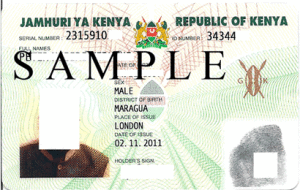 After months of struggling to deal with undocumented immigrants, corruption and inefficiency, the Kenyan government is investing $93 million in a database that will contain all citizen information, shared across ministries.
After months of struggling to deal with undocumented immigrants, corruption and inefficiency, the Kenyan government is investing $93 million in a database that will contain all citizen information, shared across ministries.
The database will contain digital identification documents for all Kenyans over the age of 12, their unique features, date and area of birth, fingerprints and photos. Family connections will be drawn from the data.
“Today, we have information collected by the registrar of persons (births and deaths), identity card registration, driving registry and the ministry of education among others; we want to harmonise these details and come up with clearer data,” said Victor Kyalo, CEO, Kenya ICT Authority.
The current national ID program has been hampered by corruption and inefficiency, with some people who aren’t legal residents obtaining ID cards. Police cannot easily verify whether cards are legitimate. This affected the Somali community after the terrorist attacks on the Westgate shopping mall, for instance.
“The new ID cards will have a chip or magnetic strip, which will allow police officers on patrol to confirm authenticity of ID cards,” added Kyalo.
Once the information is provided, Kyalo expects the government to partner with the private sector and build applications that will allow authorities to access the data.
The tender process for government contracts in the project will begin in June. There have been challenges in implementing other digitisation projects, but Kyalo said he is optimistic the database project will kick off between June and August and be finished within six months.
Kyalo was speaking at the annual Connected Kenya Summit, which explores ways to use technology to improve service delivery in the private sector. The summit this year drew participation from international companies such as SAP, Dimension Data, Oracle, SEACOM, Liquid Telecom, and Orange among others.
During the opening plenary, SAP demonstrated software that uses mobile phones to register births, showing how quickly the information can be sent to the government compared to the current, manual system.





